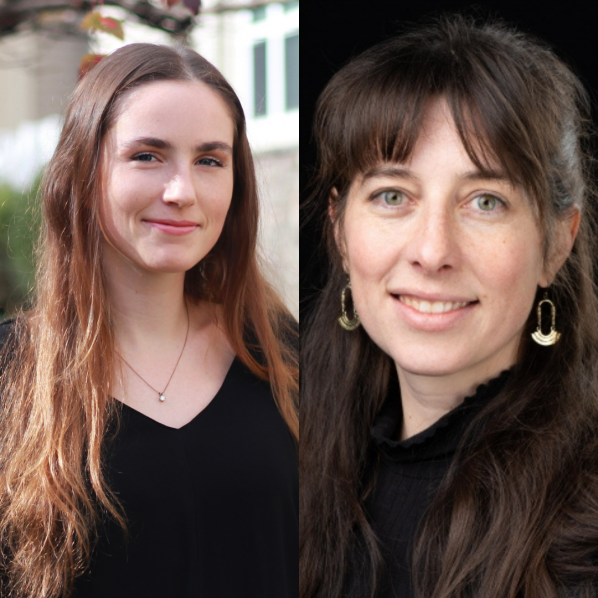The spread of COVID-19 has threatened nursing home residents and employees across the United States for the past several months. Two Appalachian State University researchers have determined which factors play the largest role in nursing home virus transmission.
Dr. Maggie Sugg, professor in the Department of Geography and Planning, and graduate student Stella Harden from Mechanicsville, V.A., recently published an article “Mapping community-level determinants of COVID-19 transmission in nursing homes: A multi-scale approach,” which analyzes unique variables impacting nursing homes during the pandemic.
The article appears in Science of the Total Environment, a weekly international peer-reviewed scientific journal covering environmental science. The study was a collaborative effort with the North Carolina Institute for Climate Studies - NCICS and Appalachian’s Beaver College of Health Sciences and Department of Geography and Planning.
“We have three publications in Science of the Total Environment for COVID-19 work. We selected it because it's the top journal in our field, and we believe COVID-19 work requires a wide audience as it's an on-going and challenging problem,” said Sugg.
The research was conducted by linking data from Centers for Medicare & Medicaid Services, American Community Survey, the 2010 Census and COVID-19 cases among the general population and nursing homes. Sugg and Harden’s research determined that nursing home COVID-19 cases are clustered in the Northeast and Southeast U.S., with nursing home quality not playing a role in the prediction of cases. Additionally, community-level factors had the strongest association with virus cases including per-capita income, average household size, population density and minority composition.
“My research typically involves working with a team of interdisciplinary collaborators and students. As a medical geographer, I apply spatial methodologies to many problems. My collaborators and I generally are approached with a research question and/or data set, and we each apply our individual expertise to solve the research question. During the research process, we also include students with the goal of training and mentoring them to become the next generation of scientists,” said Sugg.
Sugg has previously published on vulnerabilities in nursing homes with students and other Appalachian faculty. She explained it was a logical next step to examine nursing home vulnerability to COVID-19 outbreaks. This publication was one of the numerous publications Sugg completed around COVID-19 (i.e., the mental health of essential workers, surveillance of COVID-19 in rural environments, effects of humidity and temperature on COVID-19 morbidity and spatial determinants of COVID-19 incidence).
“This type of research allows my teaching to be very relevant. I teach courses in geospatial and geographic information system mapping (GIS). These software and techniques are rapidly evolving. The research makes sure I'm up-to-date and can teach students career-ready skills for the geospatial workforce,” explained Sugg.
Sugg’s research assistant Harden graduated from Appalachian with a B.S. in geography and a minor in political science in 2019 before continuing her studies in the Master’s program.
Sugg first approached Harden when she was a junior in college to work on a project with AppHealthCare communicating wildfire vulnerability in North Carolina. This research project led Harden to pursue an accelerated master's degree to continue participating in various projects with Sugg. Harden’s research primarily focuses on the geographic patterns of adverse maternal health and adolescent mental health.
“Geography is a great tool to supplement epidemiologic studies and in the case of this pandemic, is extremely useful to spatially identify at-risk groups,” said Harden.
Harden’s main task for this research project was creating maps of COVID-19 cases and deaths in the U.S.
“This COVID-19 research with Dr. Sugg has made me familiar with the publication process as well as given me the opportunity to work with professionals from different academic backgrounds,” said Harden.
Harden has also co-authored another paper recently accepted for publication titled “Analyzing the Spatial Determinants of Local COVID-19 Transmission in the United States.” After graduation, Harden hopes to pursue a Ph.D. in migration studies and/or geography or work in a research-based career field.
Moving forward, Sugg and Harden’s research will provide a framework for examining COVID-19 cases in nursing homes as future researchers will understand the importance of community-level variables when analyzing virus transmission.
About Dr. Maggie Sugg
Sugg received her B.S. in Biology in 2008, her M.A. in Geography in 2011 and her Ph.D. in Geography in 2015 from the University of North Carolina at Chapel Hill. She has been published 34 times by a variety of journals and has supervised over half a dozen students’ master theses. Her current research focuses on patterns of environmental health illnesses and how they relate to environmental, socioeconomic and climatic determinants.
###
About the Department of Geography and Planning
The Department of Geography and Planning promotes the understanding of the spatial dimensions of human behavior within the physical and cultural systems of the earth, and the role of planning in achieving improvement in those systems. The department offers degrees in geography and in community and regional planning. Learn more at https://geo.appstate.edu.
By Sophia Woodall
Dec. 2, 2020
BOONE, N.C.

